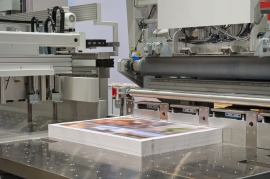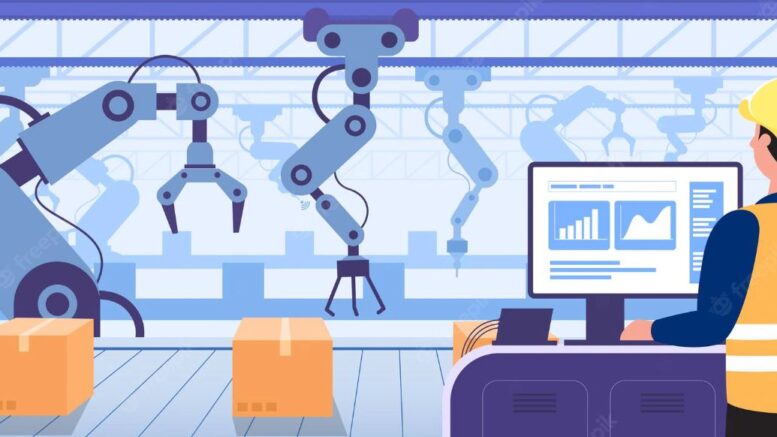
The manufacturing industry is evolving. And, as with any other industry that experiences change, some become early adapters and reap the rewards, and those who fall behind get left in the dust. The good news is these changes present an opportunity for those willing to embrace them. Here are a few technologies revolutionizing the manufacturing industry as we know it:
3D Printing
Three-dimensional printing technology has been around for a while now, but it has only recently begun to be utilized in the manufacturing industry on a large scale. And it’s not just about small items either.
Companies like GE have begun using 3D printers to create entire airplane parts. Because each part can be individually customized, there is less waste and downtime associated with production, which means increased efficiency and profitability. Moreover, 3D printing significantly reduces lead times from weeks or months to days or even hours, giving companies a much-needed competitive edge.
Augmented Reality
Although it has yet to be fully realized, augmented reality can change the way factories operate by allowing workers to superimpose digital information over their physical surroundings.
Imagine seeing how a product is supposed to be assembled without consulting a manual or drawings-augmented reality makes this possible. This technology can also be used for training; new employees can learn how to operate machinery without putting themselves or others at risk.
Internet of Things

The internet of things (IoT) is the network of physical objects such as devices, vehicles, and buildings linked to the internet and can collect and exchange data. In the past, manufacturers have been largely absent from the IoT, but that is beginning to change as more businesses realize the potential benefits of connectedness.
For example, sensors can monitor inventory levels in real-time and alert managers when supplies are running low so that they can restock before production comes to a standstill. By connecting machines and devices on the factory floor, manufacturers can quickly identify issues-like excessive vibration in a particular piece of equipment-and take corrective action before problems escalate and cause costly damage or delays.
Blockchain
In the manufacturing industry, blockchain is beginning to revolutionize how businesses operate. For example, blockchain can track the origins of materials, components, and products. This information can be used to improve quality control and supply chain management.
In addition, blockchain can streamline communication between different parts of the manufacturing process. By tracking data and sharing it securely and transparently, businesses can reduce their reliance on paper records and manual processes. As a result, blockchain has the potential to improve efficiency and reduce costs throughout the manufacturing industry.
Collaborative Robots (Cobots)
Traditionally, robots have been used in manufacturing for repetitive tasks that are dangerous for humans or require precise, repeated movements. However, these robots have often been isolated from their human coworkers; they operate independently and generally can’t make decisions without programming or direct supervision. But collaborative robots-or “cobots”-are changing that.
Cobots can work alongside humans, performing tasks and making decisions without the need for constant supervision. This increases productivity and helps alleviate some of the labor shortage issues facing manufacturers by freeing up human workers for more complex tasks. Cobots can work 24/7 without breaks or fatigue, leading to greater efficiency gains.
There are many types of cobots on the market, and there is surely one that is perfect for your company’s needs. For example, a collaborative robot arm can assist with assembly tasks such as screwing and pick-and-place operations. A cobot arm is so accurate that it can even handle tasks like welding, screwing, and soldering. And their capabilities only continue to improve, making them a valuable addition to any modern manufacturing operation.
Predictive Maintenance
In the past, manufacturers have relied on scheduled maintenance to keep their equipment running smoothly. But what if there was a way to predict and address potential issues before they cause unexpected downtime or damage? That’s where predictive maintenance comes in.
By collecting and analyzing data from sensors-like those used in IoT-predictive maintenance can identify and address issues before they become major problems. This not only improves efficiency but also helps prevent costly damage to equipment, leading to significant cost savings for manufacturers.
If you’re operating a manufacturing business, remember that you can make use of 3D printing, augmented reality, the internet of things, blockchain, cobots, and predictive maintenance. These are just a few examples of how technology is changing manufacturing for the better-making factories more efficient, productive, and profitable than ever before. Stay on top of the latest developments and see how they can benefit your business.

Be the first to comment on "Revolutions in Manufacturing Technologies You Need To Know About"